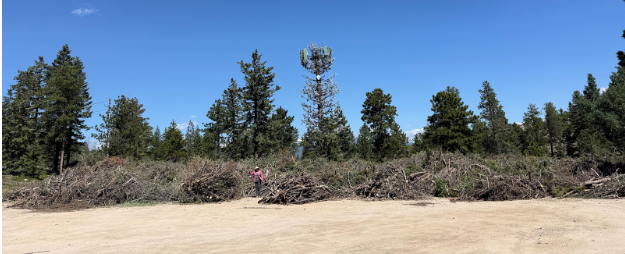CWPP Priority Project #1 – Highway 72 Roadside Fuel Mitigation
- Jody Dickson
- Aug 31, 2024
- 3 min read
By Jody Dickson, CCCFPD CWPP Implementation Committee
Within our updated Community Wildfire Protection Plan (CWPP), there are several identified top priority projects for the Coal Creek Canyon area. They are the projects that when completed will have the greatest impact on our community’s safety and resiliency through a wildfire event. These projects were identified through a collaborative process that mixed looking at a variety of scientific models combined with input from our strategic partners. Since life-safety of our neighbors and of our firefighters was identified as a major priority by everyone, we quickly identified the importance of protecting our ability to evacuate along our major egress routes. Highway 72 is the most important because in every evacuation model we ran, Highway 72 is an essential evacuation route. Depending on where the fire is located at least one direction of the highway will be used for evacuation, and it is the best suited to get the most people the furthest away from a wildfire. It will also be essential for getting firefighting resources into the community to aid our fire department in fighting the fire.
Yet, in the models, we found a lot of risks specific to Highway 72. Part of the research done was identifying sections of roadway that are “non-survivable” which means that due to the combustible fuels types along the side of the road the conditions could easily be bad enough to make it so people could not safely pass in their vehicles. Even in moderate fire conditions, there are sections of Highway 72 that were at risk of being non-survivable. In extreme fire conditions most of Highway 72 is at risk of being non-survivable. One of our agency partners called our highway a “death trap.” This is terrifying knowing how important this route will be for evacuation for the bulk of the community.
Consequently, the top priority project in our CWPP is doing roadside fuel mitigation along Highway 72. The main objective is to remove vegetation alongside the road in order to create safer evacuation conditions. We plan to do this in a couple phases. We are working with CDOT, one of our partner agencies, to tap into their resources in both people and equipment. In the past year they purchased a mulching head that can easily reduce the fuel risks alongside the road. They also have maintenance staff that we’ve seen before that will fell individual trees within their right-of-way alongside the road. This will be the first phase of the project. While it is currently unscheduled, we are working with CDOT to get some targeted times on the calendar to get it done.
The second phase of the project will be creating shaded fuel breaks alongside Highway 72. It will be much more complicated as what needs to be done will vary by the specific fuel conditions of each section of the highway. As we will need to go deeper beyond CDOT’s right-of-way, we’ll need to engage property owners in the effort for permission and access. Needless to say, it is also going to require a lot of funding. I truly don’t think we’ll be able to tackle the whole twelve miles that is within our district (and beyond to further protect our ability to evacuate) in one project. The CCCFPD’s CWPP Implementation Committee is working with CDOT to prioritize a section of Highway 72 to do this scale of work. It will be a good demonstration project for us to learn what it takes to get it done and for the community to see what it looks like. (The second and third priority projects are the same kind of work along Gross Dam Road as well as Twin Spruce and Gap Roads. They will involve different agencies to help get the work done.)
If you want to find out more or are interested in helping with this effort, please contact us at CWPPforCCC@gmail.com. We are especially hoping to hear from anyone who owns property on Highway 72. This effort is the perfect example of “It takes a community” as it will take a lot of work by many in our community but, truly, nothing will be more impactful to protect our community than to mitigate alongside the highway.
Links to the full CWPP and many related resources are available on our website at www.CoalCreekCWPP.org. The CWPP Community Outreach Team and Community Ambassadors are here to help you connect with the resources you need. If you have any questions please contact your Community Ambassador or us at CWPPforCCC@gmail.com. Thank you, again, for your fantastic support and activity to get this work done.


Comments